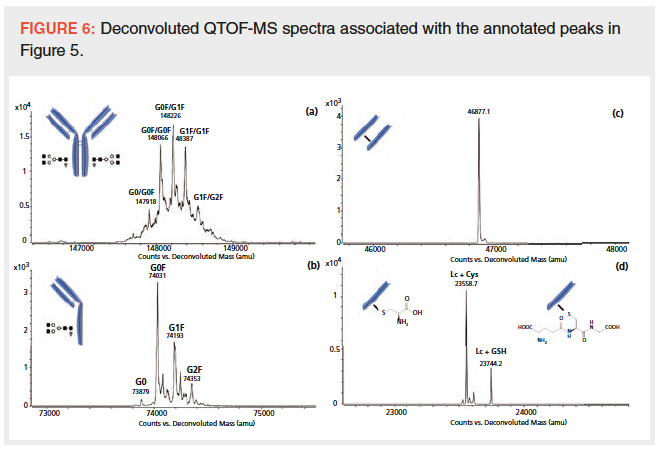Capillary Electrophoresis–Mass Spectrometry for Metabolomics: Extracting Chemical Information from Less
Rawi Ramautar discusses capillary electrophoresis–mass spectrometry for metabolomics and previews the topic for HPLC 2019.
Metabolomics has become an important tool for addressing biological and clinical questions (1). The analytical techniques commonly used for metabolomics studies often require relatively large amounts of biological material, notably for sample preparation and injection. As many studies have not been focused on limited amounts of sample material, relatively little effort has been paid to downscale the analytical workflow for metabolomics.
However, more and more biological questions are dealing with small sample amounts. For example, microfluidic threeâdimensional (3D)-cell culture models, which can mimic physiological tissues by arranging different cell types in a 3D environment within a proper microâenvironment, are increasingly being used to address biological questions. These microfluidic cell culture systems inherently deal with relatively low numbers of cells, for example, those in the range of hundreds to thousands of cells. Another example concerns the unravelling of the behaviour of a single cell within a population of cells, and, as such, obtaining a better understanding on the role of cell heterogeneity in tumour biology. To address these questions with a metabolomics approach, the development of new microscale analytical techniques and workflows is needed.
Capillary electrophoresis–mass spectrometry (CE–MS) is an attractive microscale analytical technique for addressing biological questions inherently dealing with low amounts of material. In CE, nanolitre injection volumes are often employed from just a few microlitres of sample. As such, CE–MS is well-adapted for the profiling of especially polar and charged metabolites in tiny sample amounts, as demonstrated for mouse cerebrospinal fluid (CSF) (2,3).
CSF can only be obtained in a few microlitres under proper experimental conditions. Using only a 1:1 dilution of CSF with water, and therefore fully retaining sample integrity, more than 300 compounds could be observed. As only 45 nL of the sample were consumed from a vial containing only 2 µL of a 1:1 diluted CSF, the proposed CE–MS approach allows multiple analyses on a single highly valuable mouse CSF sample, enabling repeatability studies and the analysis of the same sample at different separation conditions to further enhance metabolic coverage. Performing multiple analyses on a single scarcely available biological sample is not possible with conventional analytical techniques used in metabolomics.
Alongside the low sample and solvent requirement of CE, the separation mechanism of CE, in which compounds are separated on the basis of their charge-to-size ratio, is fundamentally different from chromatographic-based separation techniques, thereby providing a complementary view on the composition of endogenous metabolites present in a given biological sample. In comparison to chromatographic-based methods, the separation efficiency of CE is very high because there is no mass transfer between phases, and under wellâdesigned experimental conditions only longitudinal diffusion contributes to band broadening. An overview of the analytical features of CE–MS for metabolomics studies, especially for those dealing with limited sample amounts, will be given during the short course, Advanced CE–MS approaches for metabolomics, on Sunday 16 June at HPLC 2019 in Milan, Italy.
Until now, various research groups have developed CE–MS approaches for metabolic profiling of limited sample amounts (4,5), and also for single-cell analysis (6–9). Concerning the latter, the metabolomics studies were often focused on the analysis of a relatively large single non-mammalian cell with a diameter in the range of 100–1000 µm and a cellular sample content ranging from 100 nL to 500 nL. To profile metabolites in a single mammalian cell is clearly an enormous analytical challenge; for example, the content of a single HepG2 cell is only around 3 pL and a diameter of ~12 µm. In my group, low-flow CE–MS approaches using a sheathless porous tip interface are examined for metabolic profiling of low numbers of mammalian cells using HepG2 cells as a model system (10). The aim is to be able to profile a wide range of endogenous metabolites in just a few cells and ultimately a single cell; the latter will really enable the effect of cell heterogeneity to be studied-a subject that really matters in key fundamental biological questions. In my keynote lecture at HPLC 2019, I will address the current stateâofâtheâart of our CE–MS platform for metabolic profiling of low numbers of mammalian cells by presenting results obtained for HepG2 cells.
Metabolomics studies dealing with small amounts of biological sample have to critically consider preanalytical steps because adsorption effects, notably with sample volumes far below 1 µL, may result in significant analyte losses. Moreover, another challenge is how to effectively get the compounds or the fraction of interest from ultraâsmall sample amounts into the CE–MS system. Various strategies that have been explored in our laboratory and by others will also be outlined during HPLC 2019.
References
- R. Ramautar, R. Berger, J. van der Greef, and T. Hankemeier, Curr. Opin. Chem. Biol.17, 841–846 (2013).
- R. Ramautar, R. Shyti, B. Schoenmaker, L. de Groote, R.J.E. Derks, M.D. Ferrari, A.M.J.M. van den Maagdenberg, A.M. Deelder, and O.A. Mayboroda, Anal. Bioanal. Chem.404, 2895–2900 (2012).
- R. Ramautar, LCGC Europe30(12), 658–661 (2017).
- E. Sanchez-Lopez, G.S.M. Kammeijer, A.L. Crego, M.L. Marina, R. Ramautar, D.J.M. Peters, and O.A. Mayboroda, Sci. Rep.9, 806 (2019).
- A.N. Macedo, S. Mathiaparanam, L. Brick, K. Keenan, T. Gonska, L. Pedder, S. Hill, and P. BritzâMcKibbin, ACS Cent. Sci. 3, 904–913 (2017).
- R.M. Onjiko, E.P. Portero, S.A. Moody, and P. Nemes, J. Vis. Exp.130, e56956 (2017).
- R.M. Onjiko, E.P. Portero, S.A. Moody, and P. Nemes, Anal. Chem.89, 7069–7076 (2017).
- J.X. Liu, J.T. Aerts, S.S. Rubakhin, X.X. Zhang, and J.V. Sweedler, Analyst139, 5835–5842 (2014).
- P. Nemes, S.S. Rubakhin, J.T. Aerts, and J.V. Sweedler, Nat. Protoc.8, 783–799 (2013).
- W. Zhang, F. Guled, T. Hankemeier, and R. Ramautar, J. Chromatogr. B Analyt. Technol. Biomed. Life Sci.1105, 10–14 (2019).

Rawi Ramautar obtained his Ph.D. on the development of capillary electrophoresis–mass spectrometry methods for metabolomics from Utrecht University, The Netherlands, in 2010. In 2013 and 2017, he received the prestigious Veni and Vidi research grants from the Netherlands Organization for Scientific Research for the development of CE–MS approaches for volumeârestricted metabolomics. Currently, he is a principal investigator at Leiden University, The Netherlands, where his group is developing microscale analytical workflows for sampleârestricted biomedical problems.

Evaluating the Accuracy of Mass Spectrometry Spectral Databases
May 12th 2025Mass spectrometry (MS) can be effective in identifying unknown compounds, though this can be complicated if spectra is outside of known databases. Researchers aimed to test MS databases using electron–ionization (EI)–MS.

.png&w=3840&q=75)

.png&w=3840&q=75)



.png&w=3840&q=75)



.png&w=3840&q=75)















